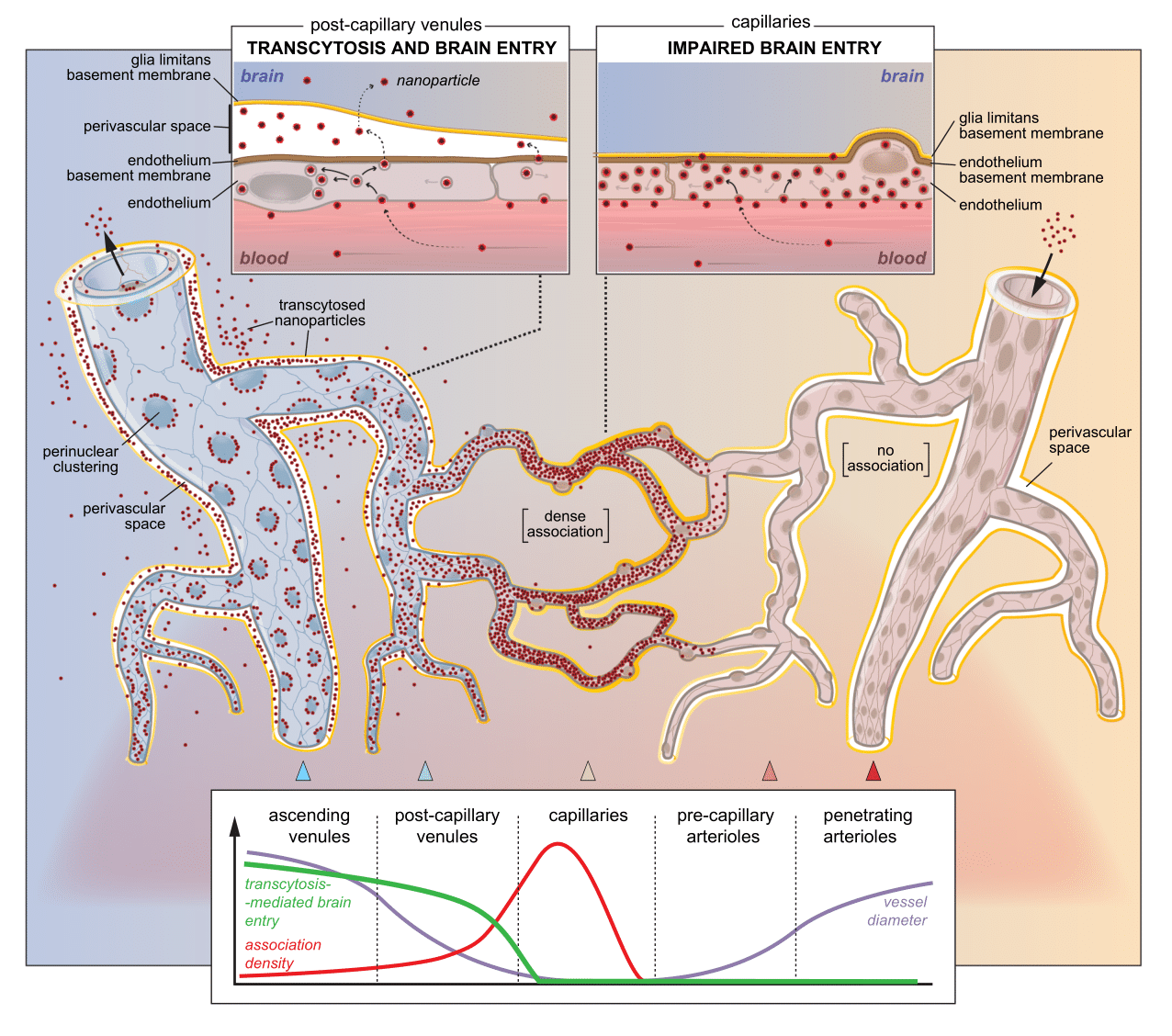A Trojan horse could help get drugs past our brain’s tough border patrol
The blood-brain barrier protects the brain and is notoriously hard to get past for drug delivery, making it difficult to treat disorders in the central nervous system. In a mice study, a team of researchers from the University of Copenhagen used a novel approach to study the barrier, together with a Trojan horse technique to help to solve the challenge.

Sclerosis, Parkinson’s Disease, Alzheimer’s and epilepsy are but a few of the central nervous system disorders. They are also very difficult to treat, since the brain is protected by the blood-brain barrier.
The blood-brain barrier works as a border wall between the blood and the brain, allowing just certain molecules to enter the brain. Water and oxygen can get through, as can other substances such as alcohol and coffee. But it block more than 99 percent of potentially neuroprotective compounds from reaching their targets in the brain.
Now, in a study conducted in living, including awake mice, a team of researchers from the University of Copenhagen provides new clues on how to get past the blood-brain barrier impermeable walls to allow drug delivery to the brain.
They investigated so-called nanoparticle liposome drug carriers and delivered them past the blood-brain barrier while tracking and monitoring them all the way through the system.
“Before this study, the community had no insight into what was happening at the blood-brain barrier in the living brain, in particular why some nanoparticles crossed and others couldn’t. In this regard, the blood-brain barrier was a ‘black-box’ where the events between drug administration and detection in the brain were obscured. It was even doubted whether nanoparticle passage to the brain was possible at all. With our paper, we now provide a direct proof of nanoparticle entry to the brain and describe when, where, and why it happens,” explains Assistant Professor Krzysztof Kucharz from the Department of Neuroscience.
Analogically to the mythical Trojan horse, the nanoparticles trick the endothelium, the main component of the blood-brain barrier, to be taken up and transported across to the brain.
The researchers, aided by colleagues at the Technical University of Denmark and Aalborg University, used two-photon imaging to deconstruct the blood-brain barrier in order to understand how the nanoparticle drug carriers travel past the blood-brain barrier in a living organism.
“We monitored the nanoparticle's passage to the brain at each step of the process, providing valuable knowledge for the future drug design. Specifically, we show which vascular segments are the most efficient to target with nanoparticles to enable their entry to the brain. And because we were able to monitor the drug carriers at the level of a single nanoparticles, we now provide a novel platform to develop more efficient and safer therapeutic approaches,” says Krzysztof Kucharz.
Using a Trojan horse
The study, released in Nature Communications, shows that nanoparticles targeted to the brain are picked up in the capillaries and venules by endothelial cells, which are the cells in the blood-brain barrier that allow or reject access of molecules to our brain tissue.
“Analogically to the mythical Trojan horse, the nanoparticles trick the endothelium, the main component of the blood-brain barrier, to be taken up and transported across to the brain. The nanoparticles have a cargo space that can be loaded with various neuroprotective drugs to treat many neurodegenerative diseases. This approach is currently tested in many clinical and preclinical trials in brain cancer, stroke, Alzheimer’s and Parkinson’s disease. However, the levels of nanoparticle transport into the brain are still low and need to improve to reach clinical significance. Therefore, there is a great need to optimize nanoparticle drug delivery, but to do so, it is crucial to understand how nanoparticles interact with the blood-brain barrier in the living brain. This is where we came into play.”, says Krzysztof Kucharz.
They show that nanoparticles can enter the brain across venules, which are large vessels surrounded by so-called perivascular space, and not, as previously believed, across small and numerous capillaries. The perivascular space surrounds venules making nanoparticles easier to exit the endothelium and progress further into the brain, but this feature is absent in capillaries.
“Our results challenge the assumed view that capillaries constitute the main locus for nanoparticle transport to the brain. Instead, venules can be targeted for more efficient nanoparticle drug delivery to the brain”, says Krzysztof Kucharz.

A great leap forward to treating brain disorders
The researchers used a two-photon imaging to study fluorescently labelled nanoparticles, which allowed them to open the blood-brain barrier “black box” and get a full picture of the fate of the nanoparticles as they progress across the blood-brain barrier to the brain.
They could observe now how nanoparticles circulate in the bloodstream, how they associate over time to the endothelium, how many are taken up by the endothelium, how many are left behind, what happens to them once inside the blood-brain barrier and where the nanoparticles exit the brain. Then, they discovered that brain vessels handle the nanoparticles differently, allowing or rejecting passage of nanoparticles to the brain tissue depending on the vessel type.
“Although the anatomy and function of the endothelium differ between different vessel types, this principal feature of the brain had so far been overlooked in drug delivery studies, and whether or how it impacted drug delivery had been unknown,” says Krzysztof Kucharz.
The methodological platform developed by authors is now to be tested in Martin Lauritzen’s lab to fine-tune nanoparticle transport, and to learn how the blood-brain barrier properties differ in diseased and aged brain, which will hopefully provide next great leap forward to treating brain disorders.
Read the study 'Post-capillary venules are the key locus for transcytosis-mediated brain delivery of therapeutic nanoparticles' here.
Contact
Assistant Professor Krzysztof Kucharz
kucharz@sund.ku.dk
+45 51 19 14 87
Professor, MD Martin Lauritzen
mlauritz@sund.ku.dk
+45 24 84 18 40
Press Officer Søren Thiesen
s.thiesen@sund.ku.dk
+45 28 75 29 34
